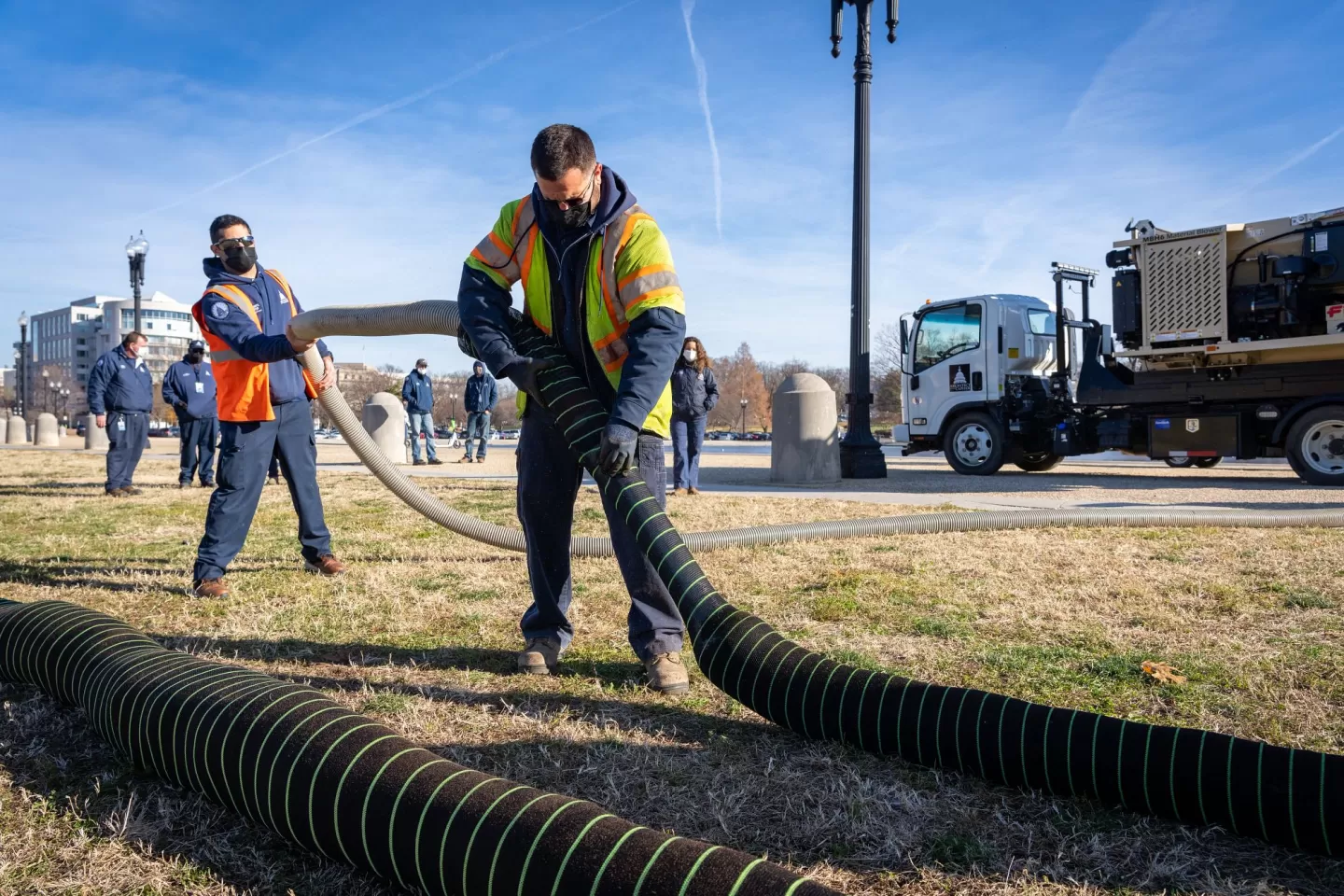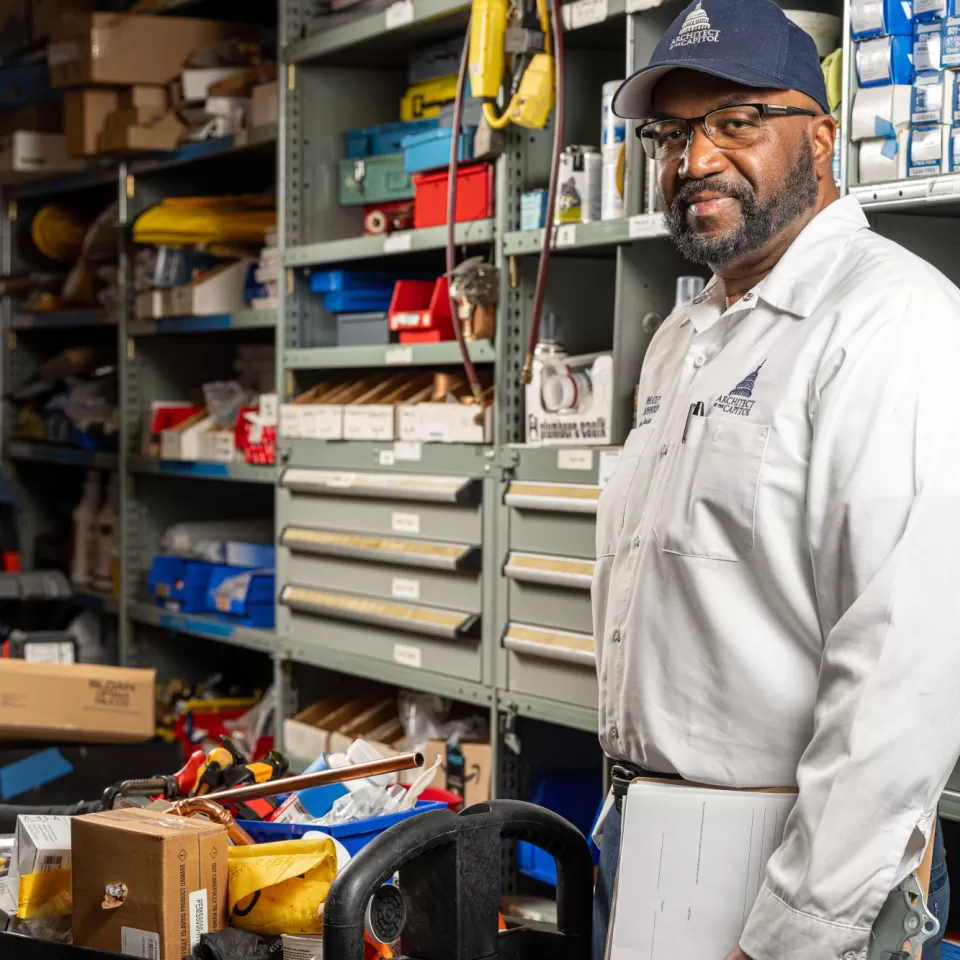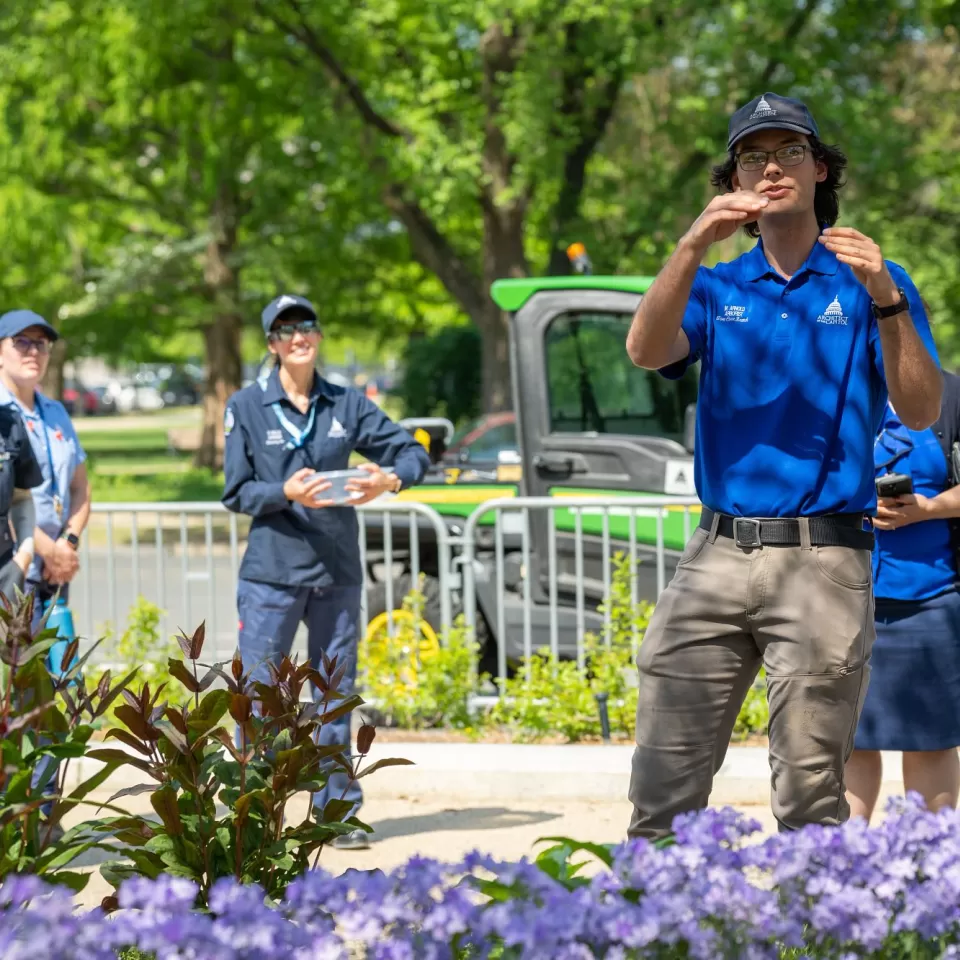Our Stories
Recent Articles
Behind the Scenes
Leading by Example
Charles "Doc" Wheatley, Assistant Supervisor of the Capitol Building Plumbing Shop's evening shift, has been a constant presence on the Capitol campus since 1987. That's when he accepted his first government position and began a decades-long career serving this treasured institution.
Behind the Scenes
Arborists on Campus — The Art of Tree Care
Thanking those who keep our trees thriving.
Behind the Scenes
Ducts in a Row
The experts at the House Mechanic Shop meticulously oversee campus HVAC systems, ensuring building temperatures are optimal for both daily operations and historic preservation.
Behind the Scenes
Meet the Historic Preservation Officer
Donna Klee has worked for the Architect of the Capitol (AOC) for more than 10 years and was named the agency's Historic Preservation Officer in the fall of 2023. In this capacity, she works to implement the agency's preservation policy.









Comments
This was a fascinating article! I hope you’ll run followup on how these machines work out over the year with their different attachments and functions. Staff were able to work on other projects and not laid off, right?
Add new comment